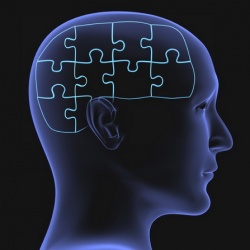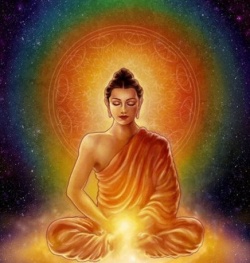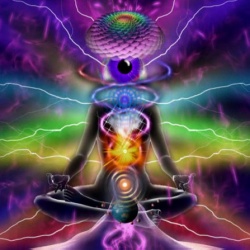Vijnanavada school
Vijnanavada school
唯識派 (Skt; Jpn Yuishiki-ha) the subjective idealism taught by the Yogacara school of Buddhist philosophy . Vijñānavāda
Synonyms
Cittamātra; Consciousness-only; Mind-only; Vijñaptimātra(tā); Yogācāra; Yogācāra-Vijñānavāda
Definition
Vijñānavāda literally means the “doctrine of consciousness.” The Vijñānavāda, sometimes called as the “Yogācāra-Vijñānavāda,” is one of the most significant schools of Mahāyāna Buddhism. According to this school, the only existent is consciousness (vijñānamātra, citta-mātra, or vijñapti-mātra).
Introduction
Vijñānavāda literally means the “doctrine of consciousness” (vijñāna + vāda). The other name of this school is the Yogācāra (see Yogācāra). It is also, at times, called the Yogācāra-Vijñānavāda. It is one of the two major schools of Mahāyāna Buddhism. This school of Buddhist thought flourished in India from the third/fourth century A.D. to twelfth century. According to this school, the only existent is consciousness (vijñāna-mātra, cittamātra, or vijñapti-mātra). In Buddhism, vijñāna corresponds to the resulting activity when the mental and physical
Vijnanavada (consciousness teachings), also Cittamatra (only spirit) or Yogacara (Yoga - practice) mentioned, is one of Asanga and Vasubandhu approx. in 4. Jh. created philosophical school of the Mahayana Buddhismus. The central theory of this school means that all perceptible phenomena only up For basis of the spirit develop and as such are unsubstantial. Consequently all perceptions are classified as mental projections.
After the theory of the Vijnanavada all things exist not in the sense of manifest reality, but only as mental phenomena of consciousness (vijnana). Inthe thoughts and conceptions create ourselves we one allegedly” material “world, which exists in truth however only in the creative fantasy of the viewer. Everything is only consciousness, only spirit (citta) [lat. not really eat est percipi] and. The thingstherefore none comes its, no actual reality. The world is not any longer a mental construction, thus only dream, not being. In addition, Nichtseiend is the dreamer (I), because is the world only dream, then is also the dreamer(I) only dreamed. With this view the Vijnanavada represents a consistent idealism.
The thinking school of the Vijnanavada expired in India with the fall of the Buddhismus in its homeland in 12. Century, continued to live however in China (here Faxiang or company-hsiangcalled) and in Japan (here Hosso called).
Together with the Madhyamaka the Vijnanavada was able a thinking of the Mahayana to penetrate like no other system deeply.
kt vijñānavāda, fr.vijñāna discrimination, intelligence (fr. vijānātihe distinguishes, understands, fr. vi apart + jānāti he knows) + vāda speech, discourse, doctrine, fr. vadati he speaks, says — more at with, know, ode
Also known as the Consciousness-Only school, one of the two major Mahayana schools in India.
The origin and development of Vijnanvada
The development of the Vijnanavada began around 150 C.E. with the Sandhinirmochana Sutra. In the next few centuries this was followed by the very important Lankavatara sutra in the early 4th century, and the Abhisamayalankara (a Prajnaparamita commentary) and Avatamsaka sutras later in the century Edward Conze, Buddhism, its Essence and Development, p.164].
The Sandhinirmochana and Lankavatara sutras were especially influential in the formulation of the doctrines of the Yogachara school, founded by two brothers, Asanga and Vasubandu (the latter, because of his great learning, was given the singular honour of being called "the second Buddha"), natives of North-West India, in the 4th or 5th century. Another source of Yogachara teachings was Asanga's little-known teacher Maitreyanatha, who has been called the true founder of the school [[[Chandradhar Sharma]], A Critical Survey of Indian Philosophy, p.108].
Asanga and Vasubandu were encyclopaedic systematisers, who developed ideas already established in older writings, such as the Abhidharma, the Prajnaparamita, and the Lankavatara, and gave definitive form to earlier Mahayanist concepts like the ten stages (bhumis) of development of the Bodhisattva, the three "bodies" of the Buddha (trikaya), the three states or levels of self-being (swabhava), and the theory that reality is consciousness-only Conze, Buddhist Thought in India, p.250; and Buddhism, its Essence and Development, p.164]. This last is the most important aspect of Vijnanavada/Yogachara, for this school differs from the Prajnaparamita and the anti-metaphysical Madhyamika approach in that it gives a positive, qualitative description of the Absolute Reality, which is described as being of the nature of pure Consciousness (vijnana); "consciousness-only" (vijnanamatrata, vijnaptimatrata); or "Mind-only" (Chittamatra).
Vijnanavada Buddhism contributed two important emanationist ideas: the metaphysical idea of emanation from an original universal consciousness (the Alaya-vijnana), and the theological idea of the Trikaya, the Three Bodies of the Buddha. As a philosophical school, Yogacara argues that all that exists are minds and their experiences. If there are no mind-independent things, why do people seem to have similar experiences (e.g., why do you and I both see the candle flame, and we both feel pain when we touch it)? The explanation offered is that previous experiences create a storehouse consciousness (alaya-vijnana, sometimes identified with the tathagatagarbha) which encourages people to have similar experiences in the future.
Late Yogacarins (Dignaga and especially, Dharmakirti, Shantarakshita, Kamalashila and Ratnakirti) were not only logicians but experts in epistemology, theory of consciousness and the Tantric yogins as well. The Mahasiddhas (Great Perfect Ones) in some aspects were also adherents of the Yogacara school.
Chinese Vijnanvada
The Yogachara metaphysic, thus formulated in India, was further developed in China, where, due to an artifact of translation and interpretation, the Tathagata-garbha (in Chinese fo-hsing - "Buddha-womb" - the womb of the Buddha or storehouse of the Buddha, the potential for Buddhahood which all beings possess.), was distinguished from the Alaya-vijnana. In Indian texts such as the Lankavatara and the Mahaparinirvana sutras the Tathagata-garbha was specifically identified with the Alayavijnana, and referred to the potential or cause leading or pointing towards enlightenment, rather than an actual state or reality. In Chinese, due to Mencian Confucian and Chuang-tze Taoist preconceptions, it came to mean "Buddha-nature", an ontological reality or essence, like the Vedantic Atman Whalen Lai, "The Meaning of "mind-only" (wei-hsin): An analysis of a sinitic Mahayana phenomenon", Philosophy East and West 27, no 1; p.73-74]. The Alayavijnana then came to be seen as a lower or impure level of Consciousness, the "tainted consciousness" (shih) relative to the Tathagatagarbha or innately pure Absolute Buddha Mind (hsin) or Buddha-nature. Tathagatagarbha or Mind or hsin thus became a "ninth consciousness" or original principle over and above the other eight. This idea of the superiority of Mind (hsin) over consciousness (shih) was used by the Mind-Only schools of Hua-yen and [[Ch'an] to claim superiority over the consciousness-only school of Wei-shih (Chinese Yogachara) [Ibid, pp.65, 79]. In all this we see the development of an emanationist cosmology more like Neoplatonism or Kashmir Shaivism than original Yogachara Mahayana. But the anti-metaphysical emphasis of even the most elaborate Buddhist schools prevented this modified Yogachara from ever becoming as sophisticated as those other two systems.
Vijnanvada and the West
In the Nineteenth century, elements of Vijnanavada, such as the Alayavijnana and the Manas, were adopted in modified from by H. P. Blavatsky, the founder of Theosophy. As was mentioned earlier, Blavatsky was also influenced by the Vedantic idea of koshas, so Yogachara can be seen to be a second source of inspiriation. More recently, young Buddhist-orientated Westerners have made much of the parallel between the Alaya-vijnana and the Collective Unconscious of the psychologist-mystic Carl Jung. Certainly there are many parallels (e.g. in both there is a universal substratum, a sort of Un- or Super-consciousness, behind the surface consciousness; and the repository of subconscious impulses to manifestation). But there are also important differences too. Jung's archetypes are universal transpersonal religious or mythological motifs, more equivalent to the "gods" of polytheism then to the karmic seeds or vasanas; and Jung's positive assessment of the ego - the ego being a necessary state in the development of self - and higher consciousness, is diametrically opposed to the ego-transcending perception of the various Indian philosophies.
See Consciousness-Only school.


